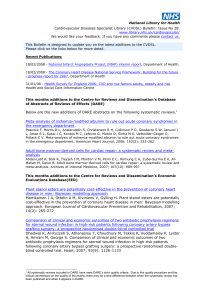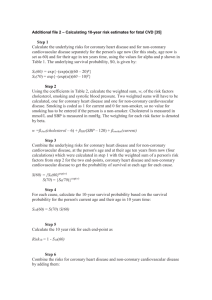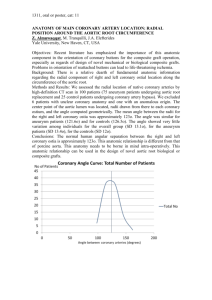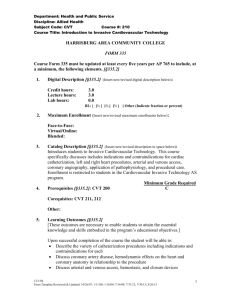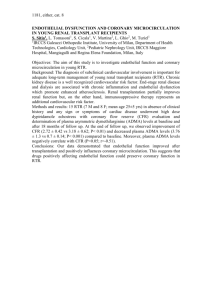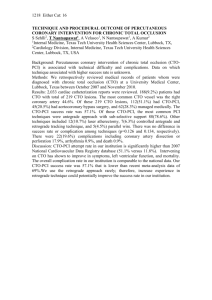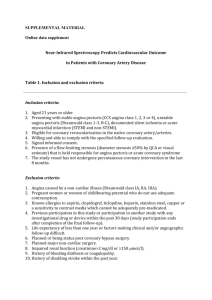clinical management of a high risk diabetic population undergoing
advertisement
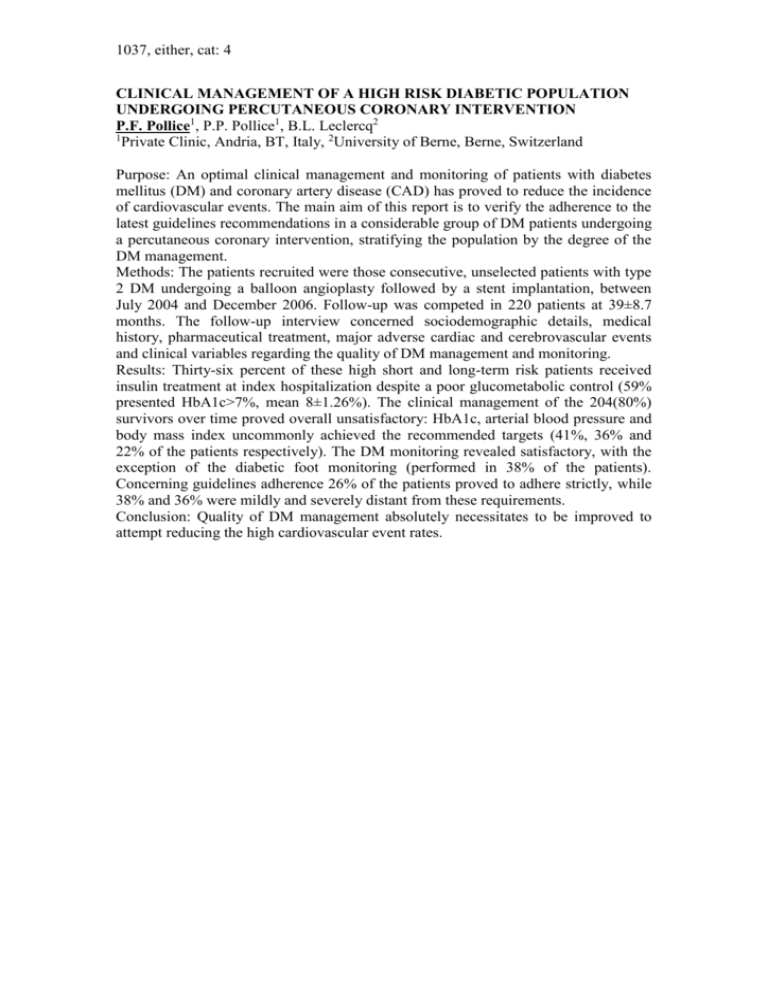
1037, either, cat: 4 CLINICAL MANAGEMENT OF A HIGH RISK DIABETIC POPULATION UNDERGOING PERCUTANEOUS CORONARY INTERVENTION P.F. Pollice1, P.P. Pollice1, B.L. Leclercq2 1 Private Clinic, Andria, BT, Italy, 2University of Berne, Berne, Switzerland Purpose: An optimal clinical management and monitoring of patients with diabetes mellitus (DM) and coronary artery disease (CAD) has proved to reduce the incidence of cardiovascular events. The main aim of this report is to verify the adherence to the latest guidelines recommendations in a considerable group of DM patients undergoing a percutaneous coronary intervention, stratifying the population by the degree of the DM management. Methods: The patients recruited were those consecutive, unselected patients with type 2 DM undergoing a balloon angioplasty followed by a stent implantation, between July 2004 and December 2006. Follow-up was competed in 220 patients at 39±8.7 months. The follow-up interview concerned sociodemographic details, medical history, pharmaceutical treatment, major adverse cardiac and cerebrovascular events and clinical variables regarding the quality of DM management and monitoring. Results: Thirty-six percent of these high short and long-term risk patients received insulin treatment at index hospitalization despite a poor glucometabolic control (59% presented HbA1c>7%, mean 8±1.26%). The clinical management of the 204(80%) survivors over time proved overall unsatisfactory: HbA1c, arterial blood pressure and body mass index uncommonly achieved the recommended targets (41%, 36% and 22% of the patients respectively). The DM monitoring revealed satisfactory, with the exception of the diabetic foot monitoring (performed in 38% of the patients). Concerning guidelines adherence 26% of the patients proved to adhere strictly, while 38% and 36% were mildly and severely distant from these requirements. Conclusion: Quality of DM management absolutely necessitates to be improved to attempt reducing the high cardiovascular event rates.



